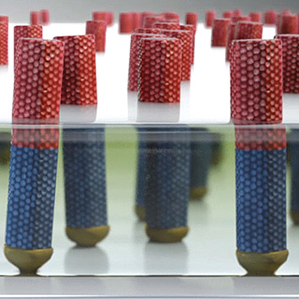Nanowire inks are expected to improve solar cell conversion efficiency
Recently, Sol Voltaics from Sweden announced that using nanowire inks can boost solar panel efficiency by up to 25% without significantly raising production costs, making solar energy more affordable and competitive. This breakthrough could be a game-changer in the renewable energy sector.
The company is working on a novel method to extract nanowires from gallium arsenide (GaAs), a material known for its superior performance in solar cells compared to silicon. However, GaAs has always been expensive, which limits its widespread use. Sol Voltaics aims to change that by making the process more cost-effective and scalable.
According to their approach, nanowires are suspended in liquid and applied in a way that their ends face upward—similar to how grass or beard hairs stand upright. This technique allows them to generate more electricity while using less of the expensive material. The result is a more efficient and economical solar panel.

David Epstein, CEO of Sol Voltaics, explained, “The amount of material needed to cover one square meter is less than a gram.†This means that even small quantities of nanowire ink can make a big difference in power output.
The technology can be applied directly onto surfaces like glass or existing solar panels, increasing their energy generation capacity. A 25% efficiency improvement could mean fewer panels are needed to produce the same amount of power, or the same number of panels could generate more electricity. For example, a 200-watt panel could effectively become a 250-watt panel with this enhancement.
While initial costs may be involved, the long-term benefits are expected to far outweigh them. Sol Voltaics believes this innovation will help accelerate the adoption of solar energy globally.
The company was founded by Professor Lund Samuelson, a renowned nanotechnology expert from Lund University in Sweden. His research is based on a unique process called "aerotaxy." Unlike traditional methods where materials are deposited on fixed surfaces like silicon wafers, aerotaxy involves forming nanowires continuously on gold nanoparticles as they flow through a gas-filled chamber.
Once formed, these nanowires are collected and stored in a liquid solution suitable for inkjet printing. Sol Voltaics doesn’t manufacture solar panels themselves but plans to supply the nanowire ink to existing manufacturers, enabling them to boost their panels’ efficiency.
Epstein humorously described their business model: “We call it ink, and we will become an ink factory.â€
Currently, Sol Voltaics has demonstrated solar cells made from indium phosphide nanowires. They plan to showcase GaAs-based solar cells by the end of 2013 and begin large-scale commercial production by 2016.
To date, the company has raised $11 million from Swedish investors and aims to secure another $10 million to $20 million this year. They estimate at least $50 million will be needed to launch mass production, signaling their confidence in the future of this technology.
machine sink, pressed drawn sink, machine made kitchen sink
Jiangmen MEIAO Kitchen And Bathroom Co., Ltd. , https://www.meiaosink.com